Make a Sound Machine
Design a sound machine and explore programming variables that make soft sounds, loud sounds, environmental sounds, rhythms, and melodies.
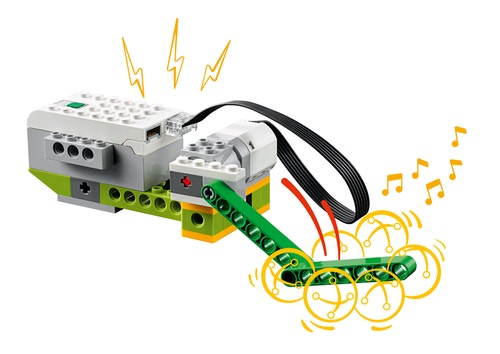
1. Introduction/Discussion
Introduction
This is a highly engaging Maker lesson that will create some joyful noise! Your pupils will explore programming variables that make soft sounds, loud sounds, environmental sounds, rhythms and melodies. They can even combine projects to form a band!
Preparation
Ensure that each pupil has a copy of the Pupil Worksheet for recording their design process. They will also need the LEGO® Education WeDo 2.0 Core Set (one set for every two pupils is recommended).
Discussion
Hand out the Pupil Worksheets and allow your pupils to interpret the lesson for themselves, or read the Maker ‘Connect’ text aloud to set the scene.
2. Find a Problem
As pupils look at the ‘Connect’ images and questions, facilitate a discussion to steer them towards a problem or a new design opportunity. Once they have decided upon a problem to solve, ensure that they record this in some way. They can use the worksheet to help structure their project documentation or use their own preferred method to record their design journey.
3. Brainstorm
Pupils should initially work independently or in pairs, spending a few minutes to generate as many ideas as they can to solve the problem. They can use bricks from the LEGO® set during the brainstorming process or sketch out their ideas in the space provided on the worksheet.
It is important for pupils to spend time tinkering with the LEGO® bricks in order to generate ideas. The goal of tinkering is to explore as many solutions as possible. You can use the tinkering examples that are provided at the end of this material for inspiration or as a means for getting started.
Pupils can now take turns sharing their ideas within their groups. Once all of the ideas have been shared, each group should select the best idea(s) to make. Be prepared to help facilitate this process, ensuring that your pupils choose an idea that is possible to make. Encourage diversity, not all groups have to make the same thing.
4. Choose the Best Idea
Pupils should record up to three design criteria on their worksheets. They will refer to this again as they review and revise their solutions.
5. Make the Idea
Let the pupils carry out one of their group’s ideas using the WeDo 2.0 Core Set and other materials as needed. Reinforce the idea that pupils do not have to come up with the whole solution from the start.
During the making process, remind your pupils to test and analyse their ideas as they go along, making improvements where necessary. If you would like them to submit their documentation at the end of the lesson, ensure that they use sketches and photos of their models to record their design journey during the making stage of the lesson.
Tinkering Examples
Some pupils may require a little inspiration and support to help them to get started.
They can explore the Model Library to see some of the different types of sound machines that they can make. By asking questions (e.g. Would you like to make a sound machine that taps a beat or shakes an object?) you can help lead pupils to the most relevant models. Pupils can remake their models by adding or removing LEGO® elements and other objects.
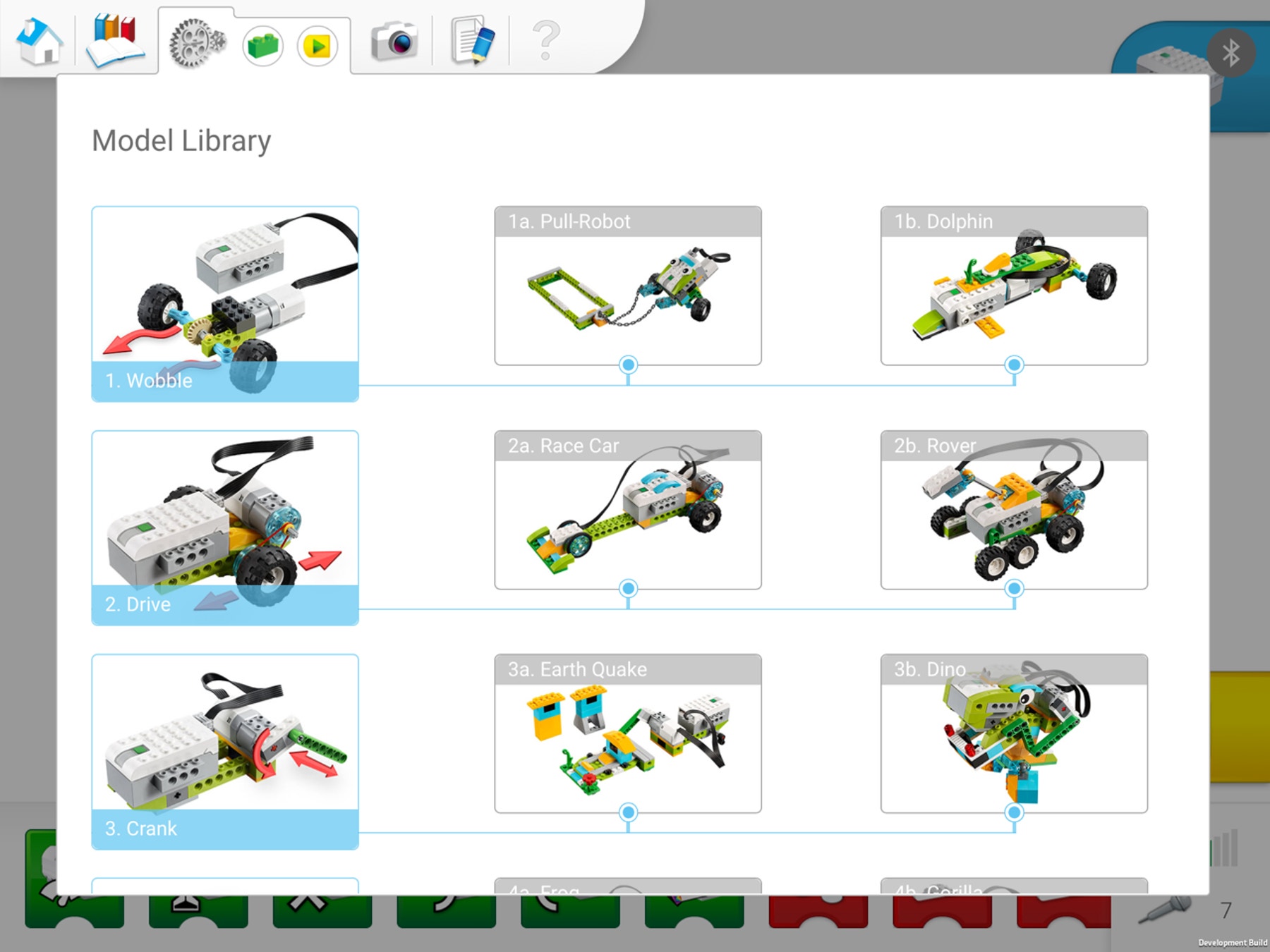
By combining the WeDo 2.0 Smarthub and a sensor, the sound library makes a simple sound machine with many possibilities, including the ability to record and play a custom sound or melody.
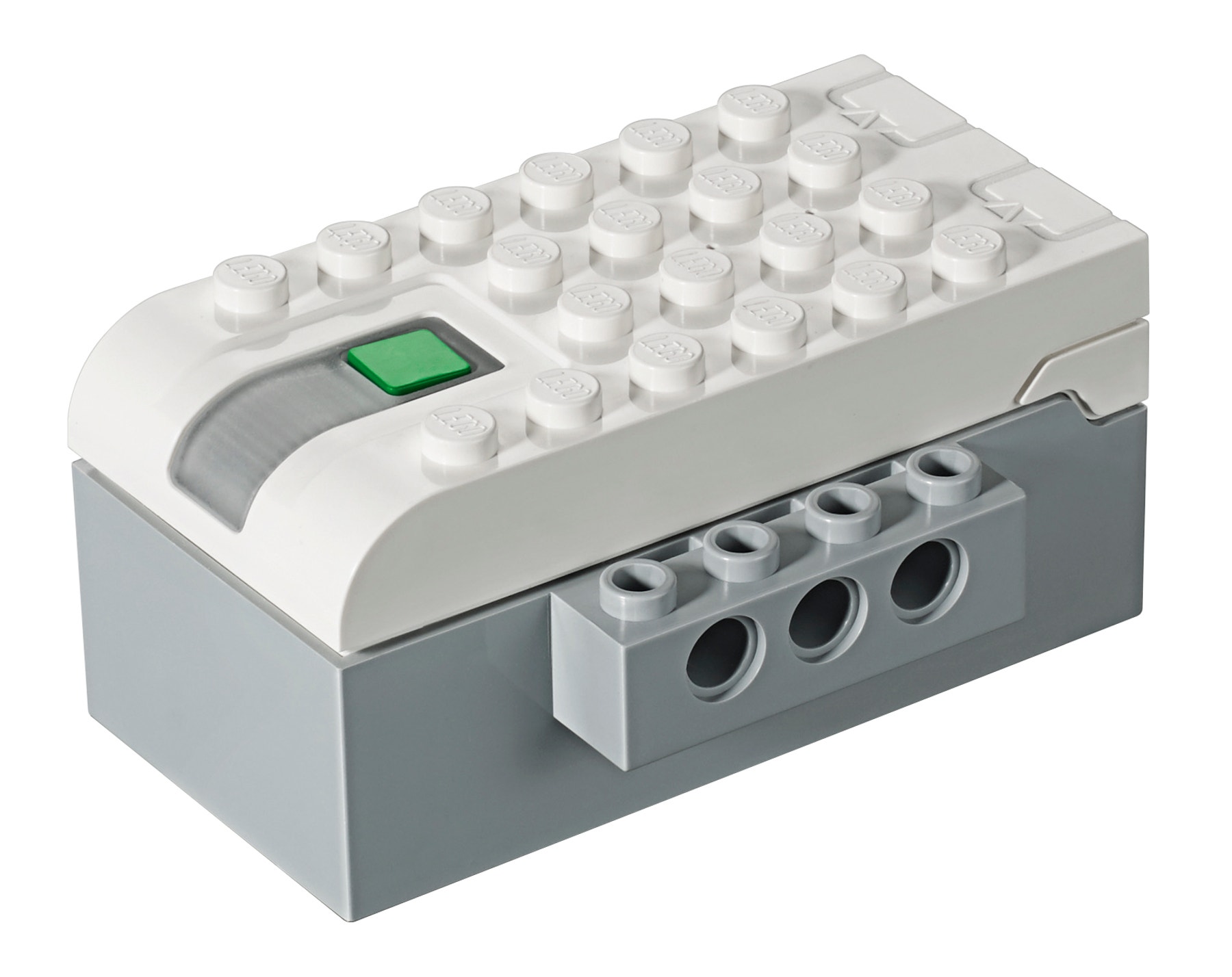
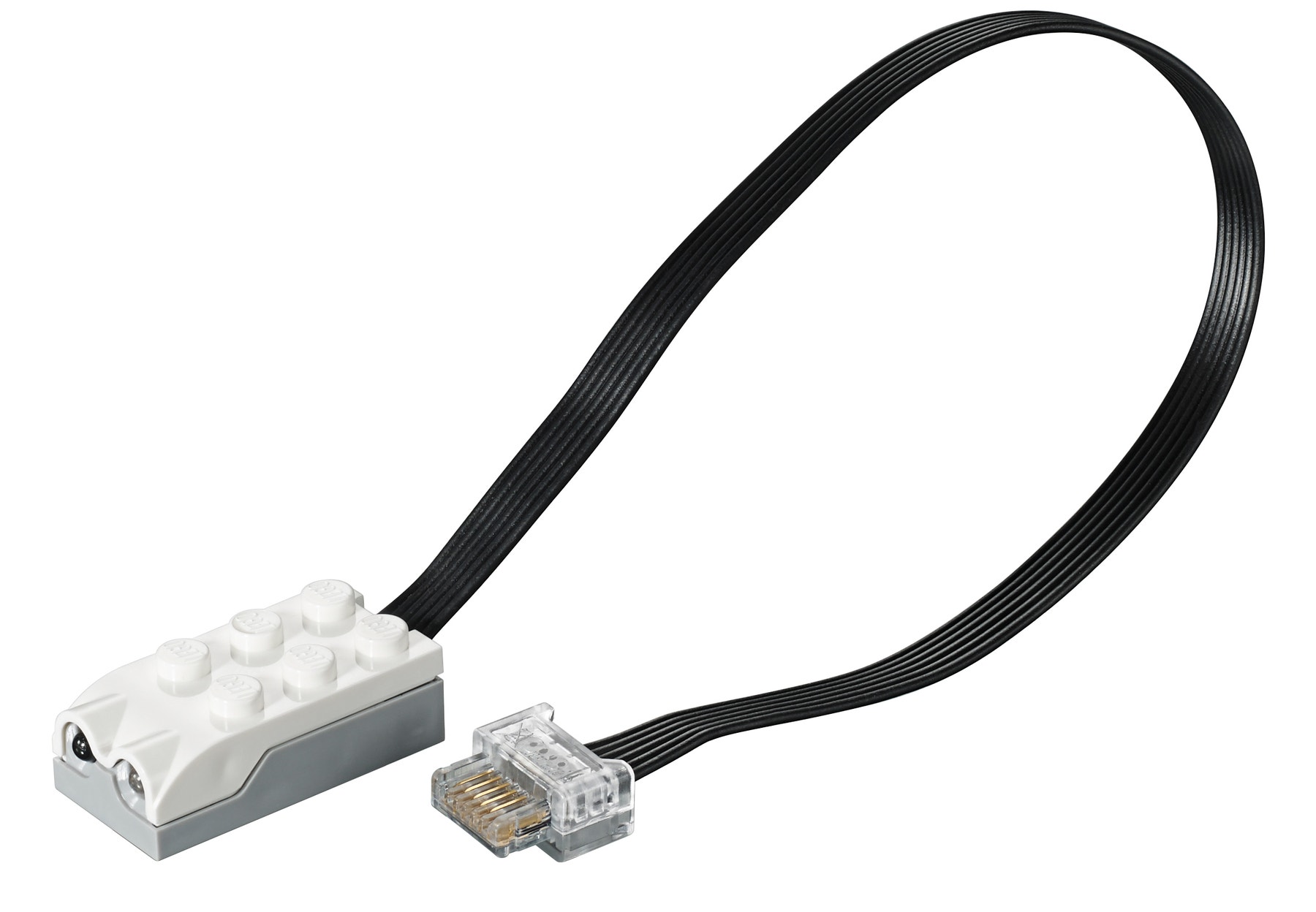

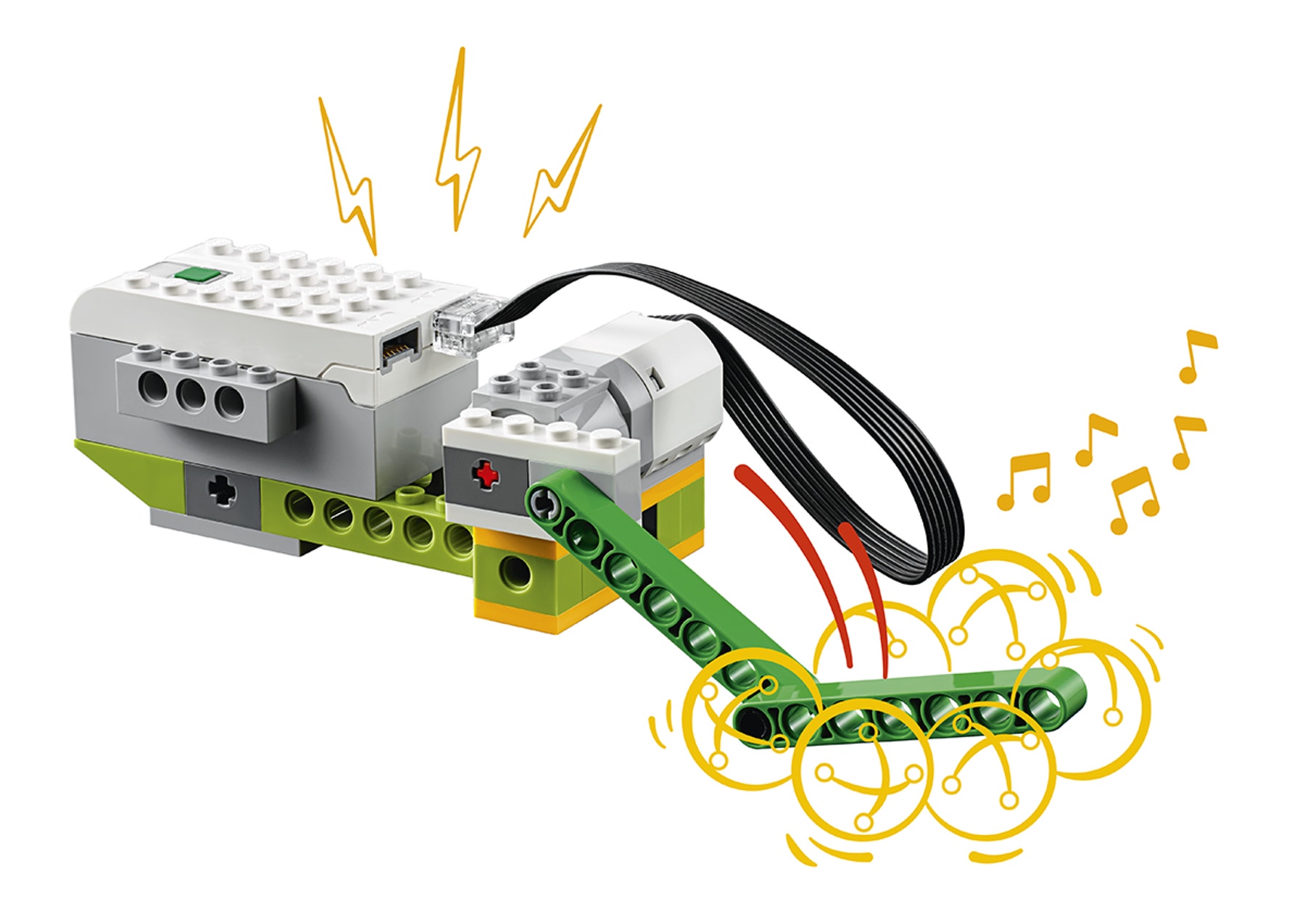
Remade from model #3., Crank

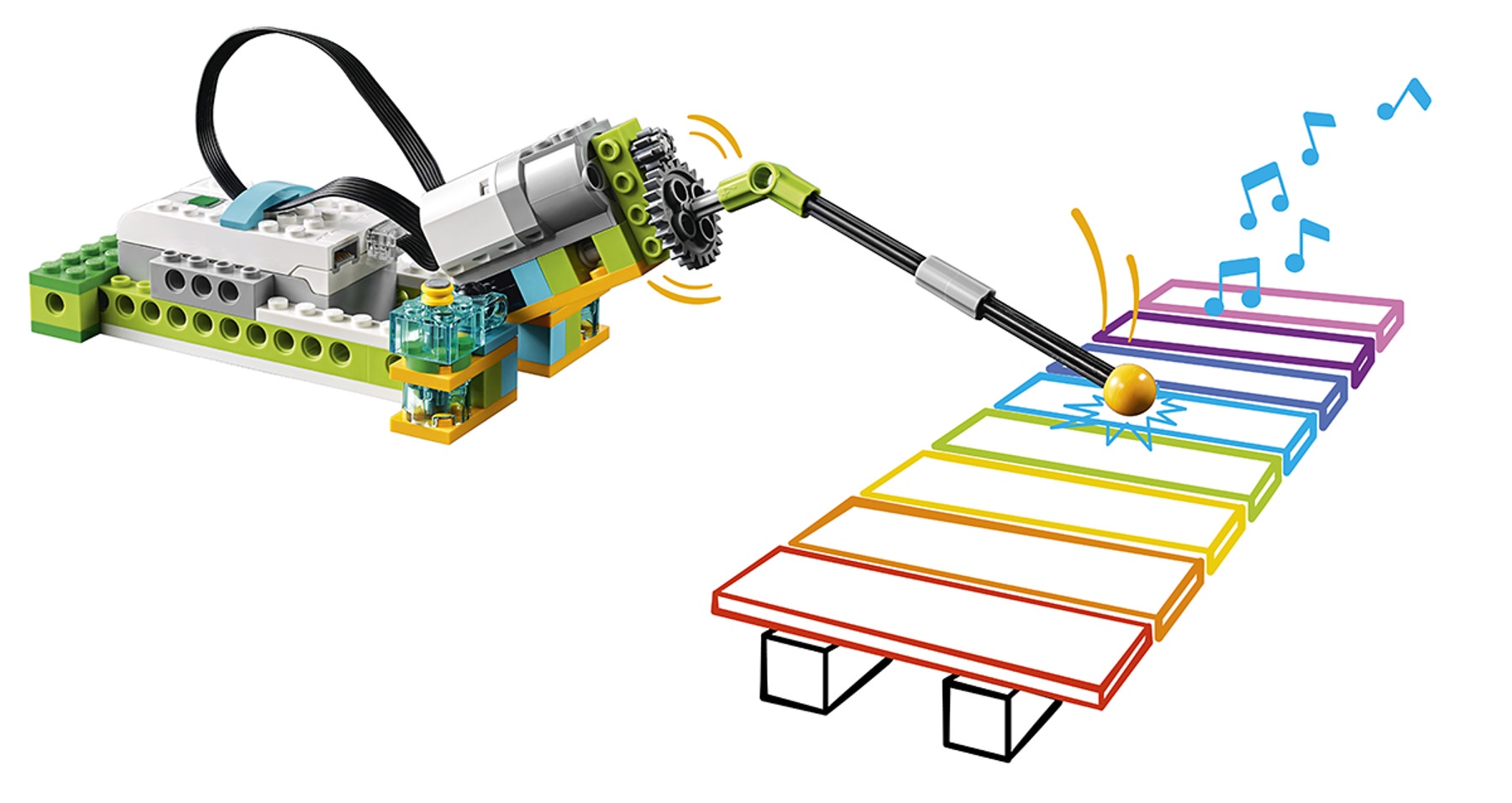
Remade from model #5., Spin

6. Evaluate What You Have Made
Your pupils will test and evaluate their designs against the design criteria that they recorded before they started making their solutions. They can record notes on their Pupil Worksheets.
7. Present Your Model
Allow time for each pupil or group of pupils to present what they have made to the class. A good way to do this is to set out a table that is large enough to display all of the models. If you are short of time, pair off the groups and ask them to present to each other
8. Assessment
Your pupils will use the Pupil Worksheet assessment rubric to evaluate their design work according to the ‘Four Bricks Scale’.
9. Tidy Up
Ensure that you leave approximately 10-15 minutes at the end of the lesson to break down the models and sort them back into the LEGO® boxes.
Teacher Support
After completing this lesson, pupils will have:
- Used and understood the design process
- Defined a clear design need
- Developed their ability to iterate and improve design solutions
- Developed their problem-solving and communication skills
LEGO® Education WeDo 2.0 Core Set
WeDo 2.0 Software or Programming App
Optional
Use craft materials that you already have in your classroom to add another dimension to this lesson. Some materials could be:
Rubber bands
Pipe cleaners
Small musical instruments (e.g. xylophone, tambourine, jingle bells, cymbals, drums, maracas, rainstick)
Plastic or paper cups
Keys or other metal objects
Recycled materials and objects from nature
Pupil Material
Share with:
 Google Classroom
Google Classroom



